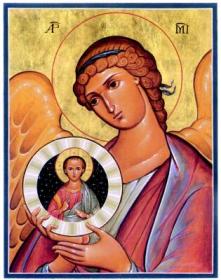 Last week in Nairobi, two American priests were consecrated as bishops to minister to 32 American congregations that have placed themselves under the oversight of Kenyan Archbishop Benjamin Nzimbi. The preacher for the occasion was the Most Rev’d Drexel W. Gomez, Archbishop of the West Indies. In his homily, Archbishop Gomez cited an interesting passage on patristic theories of episcopacy from a recent document of the Inter Anglican Standing Commission on Ecumenical Relations, which is chaired by Archbishop Gomez. I have not been able to locate the full docmument on-line – perhaps Archbishop Gomez was giving us a sneak preview. Also, it is not clear where his quotation of the IASCER document ends, since all of the on-line versions of his homily lack a closing quotation mark. Without further comment, here is the passage from the homily.
Last week in Nairobi, two American priests were consecrated as bishops to minister to 32 American congregations that have placed themselves under the oversight of Kenyan Archbishop Benjamin Nzimbi. The preacher for the occasion was the Most Rev’d Drexel W. Gomez, Archbishop of the West Indies. In his homily, Archbishop Gomez cited an interesting passage on patristic theories of episcopacy from a recent document of the Inter Anglican Standing Commission on Ecumenical Relations, which is chaired by Archbishop Gomez. I have not been able to locate the full docmument on-line – perhaps Archbishop Gomez was giving us a sneak preview. Also, it is not clear where his quotation of the IASCER document ends, since all of the on-line versions of his homily lack a closing quotation mark. Without further comment, here is the passage from the homily.In IASCER’s response to the Lutheran document “The Episcopal Ministry within the Apostolicity of the Church,” particular note was taken of the patristic tradition concerning episcopal ministry:
Historians commonly agree that there are three principal images or models of the office of a bishop in the pre-Nicene church, which are best exemplified in Ignatius of Antioch, Irenaeus, and Cyprian.
 “For Ignatius, the bishop is primarily the one who presides at the eucharist. This is central for Ignatius because of his understanding of the nature of the church. For Ignatius, then, the bishop is . . . the one who presides at . . . the eucharistic liturgy.
“For Ignatius, the bishop is primarily the one who presides at the eucharist. This is central for Ignatius because of his understanding of the nature of the church. For Ignatius, then, the bishop is . . . the one who presides at . . . the eucharistic liturgy.Irenaeus, on the other hand, while echoing the eucharistic teaching of Ignatius, places primary emphasis on the bishop’s role as teacher of the faith. The context here is the conflict with Gnosticism. For Irenaeus, the bishop is above all the one who preserves the continuity of the apostolic teaching in unbroken succession from the apostles. It is through the bishop's faithful proclamation of the Gospel in each local church that the unity of the church and the continuity of the church in the apostolic tradition is preserved.
For Cyprian, the bishop serves as the bond of unity between the local church and the universal church. Here the collegial aspect of the bishop’s role comes to the fore. The bishop is one member of a worldwide ‘college’ of bishops who are together responsible for maintaining the unity of the churches. Cyprian’s primary emphasis, therefore, is upon the bishop as the bond of unity between the local church and the church universal.
In each of theses models, therefore, the bishop is the sign of unity between the local and the universal church, either through the maintenance of eucharistic communion, continuity in apostolic teaching, or common oversight of the churches.


No comments:
Post a Comment